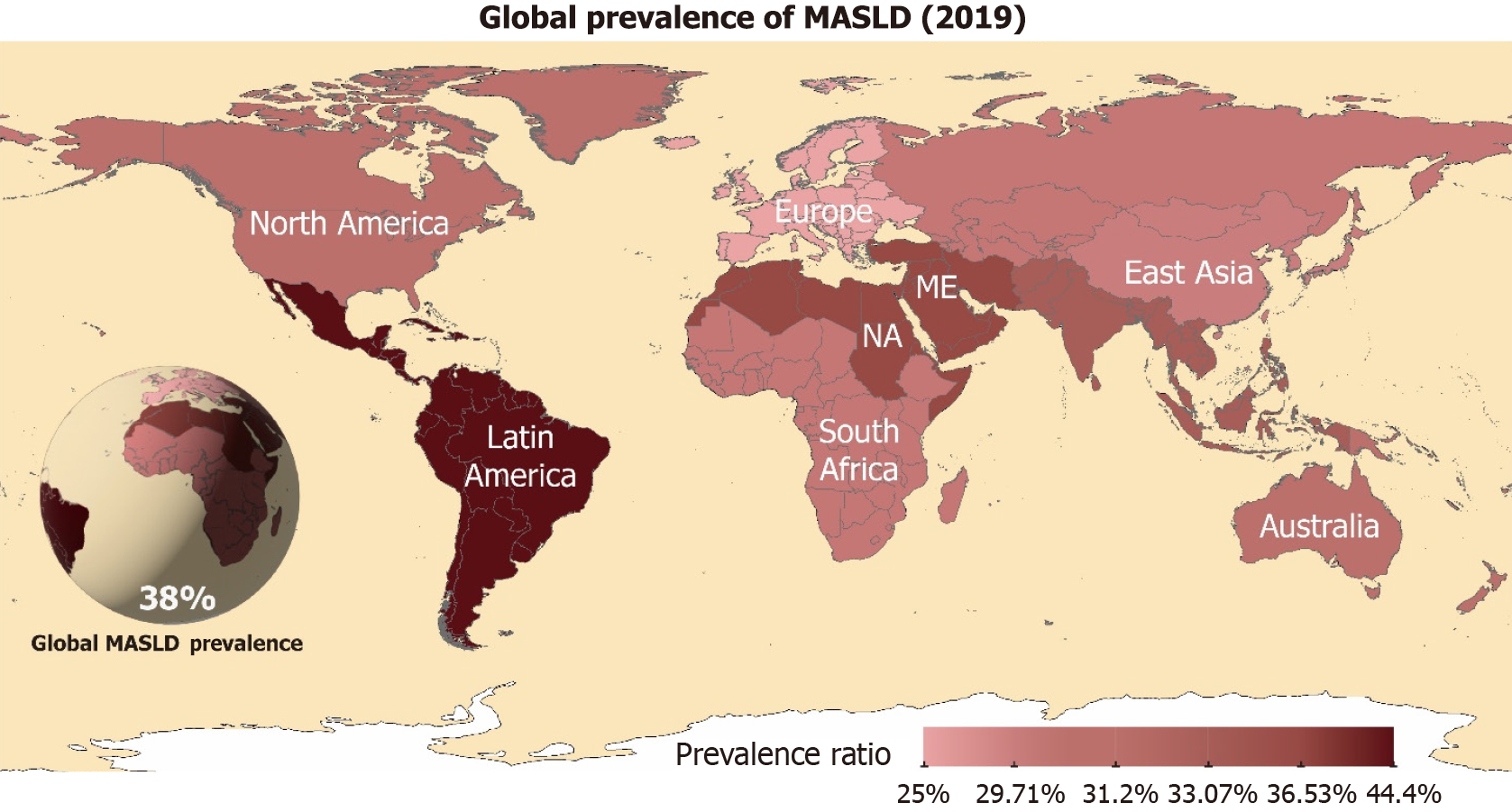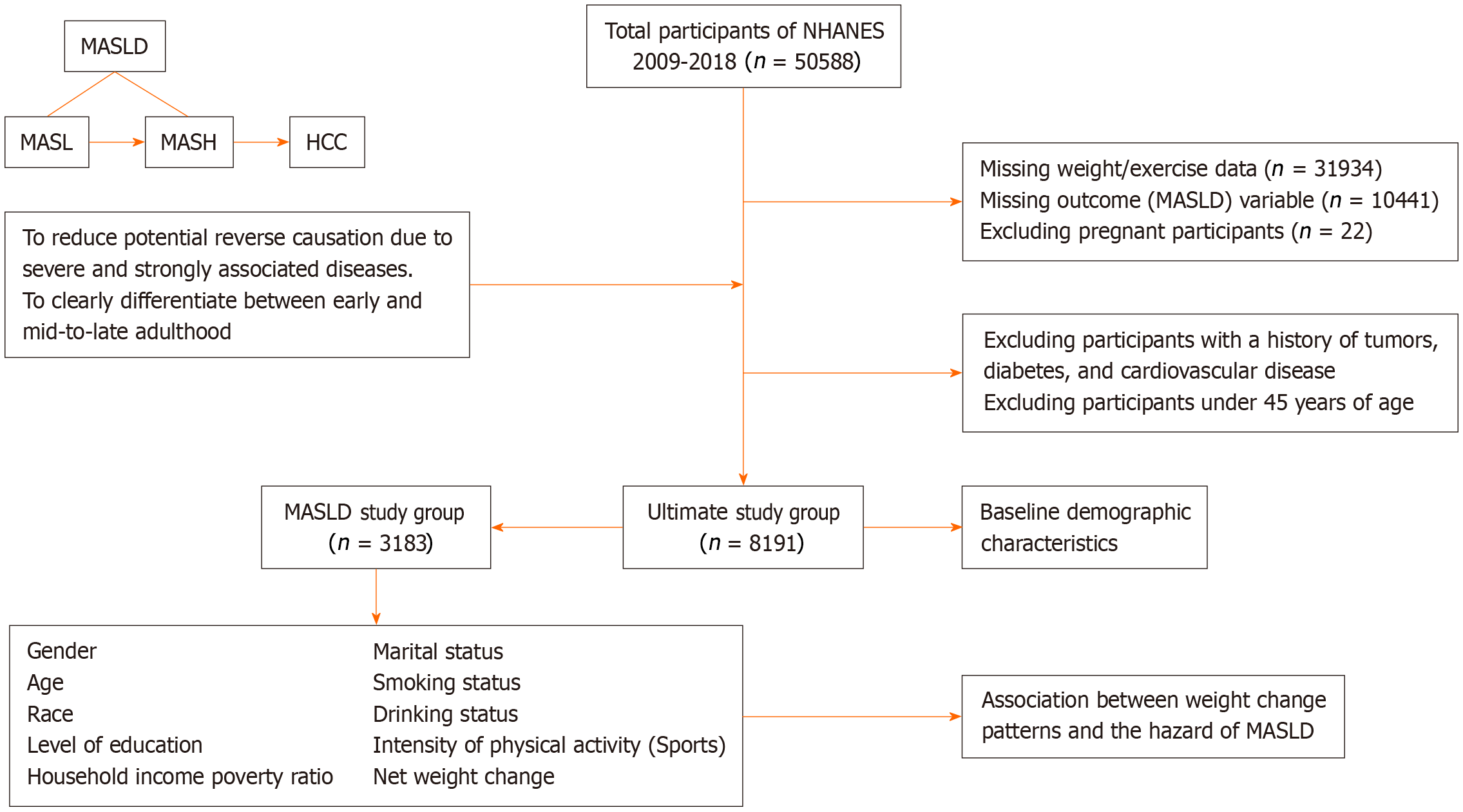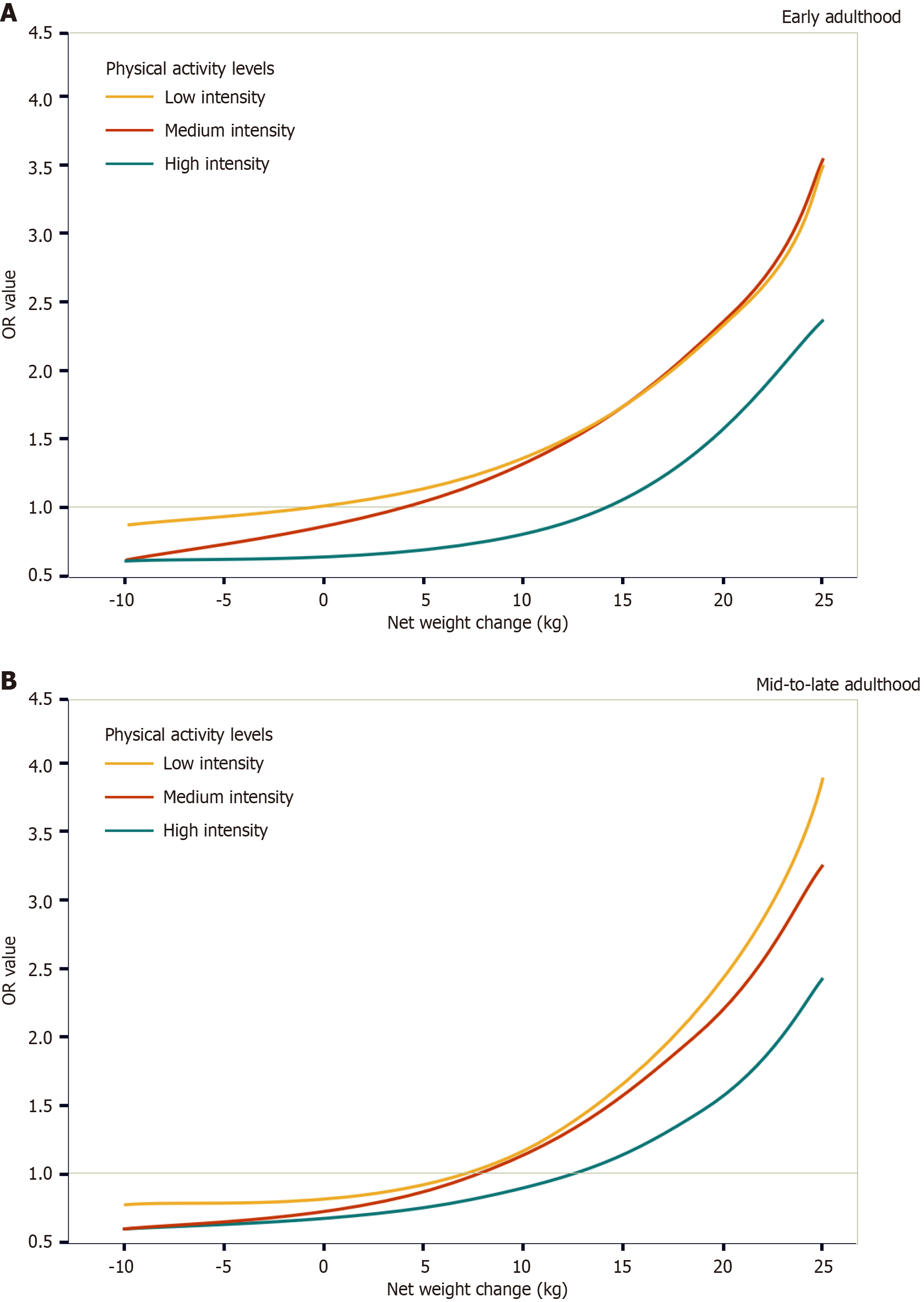Copyright
©The Author(s) 2025.
World J Hepatol. May 27, 2025; 17(5): 103852
Published online May 27, 2025. doi: 10.4254/wjh.v17.i5.103852
Published online May 27, 2025. doi: 10.4254/wjh.v17.i5.103852
Figure 1 Recent global prevalence of metabolic dysfunction-associated steatotic liver disease and recent prevalence of metabolic dysfunction-associated steatotic liver disease by continent.
Figure 1 was created using ArcMap 10.2. Maps and data were separately sourced from publicly available resources on the websites (Resource and Environmental Science Data Platform, Geoboundaries, etc.) and literature surveys. Figure 1 now incorporates data obtained from recent epidemiological studies on MASLD. MASLD: Metabolic dysfunction-associated steatotic liver disease.
Figure 2 Flow chart.
Metabolic dysfunction-associated steatotic liver disease development, total number of participants, exclusion criteria, final study group, incorporation of variables, and purpose of statistical analysis. HCC: Hepatocellular carcinoma; MASH: Metabolic dysfunction-associated steatohepatitis; MASL: Metabolic dysfunction-associated steatotic liver; MASLD: Metabolic dysfunction-associated steatotic liver disease; NHANES: National Health and Nutrition Examination Survey.
Figure 3 Arc diagram illustrates the association of exercise intensity and body fluctuation with metabolic dysfunction-associated steatotic liver disease risk based on odds ratio analysis.
A: Early adulthood; B: Mid-to-late adulthood. OR: Odds ratio.
- Citation: Wang JP, Wang JY, Sun PQ, Wang XW, Yuan ZT, Cao Q, Pan SM, Jiang YY. Association between weight fluctuation and the risk of metabolic dysfunction-associated steatotic liver disease. World J Hepatol 2025; 17(5): 103852
- URL: https://www.wjgnet.com/1948-5182/full/v17/i5/103852.htm
- DOI: https://dx.doi.org/10.4254/wjh.v17.i5.103852















